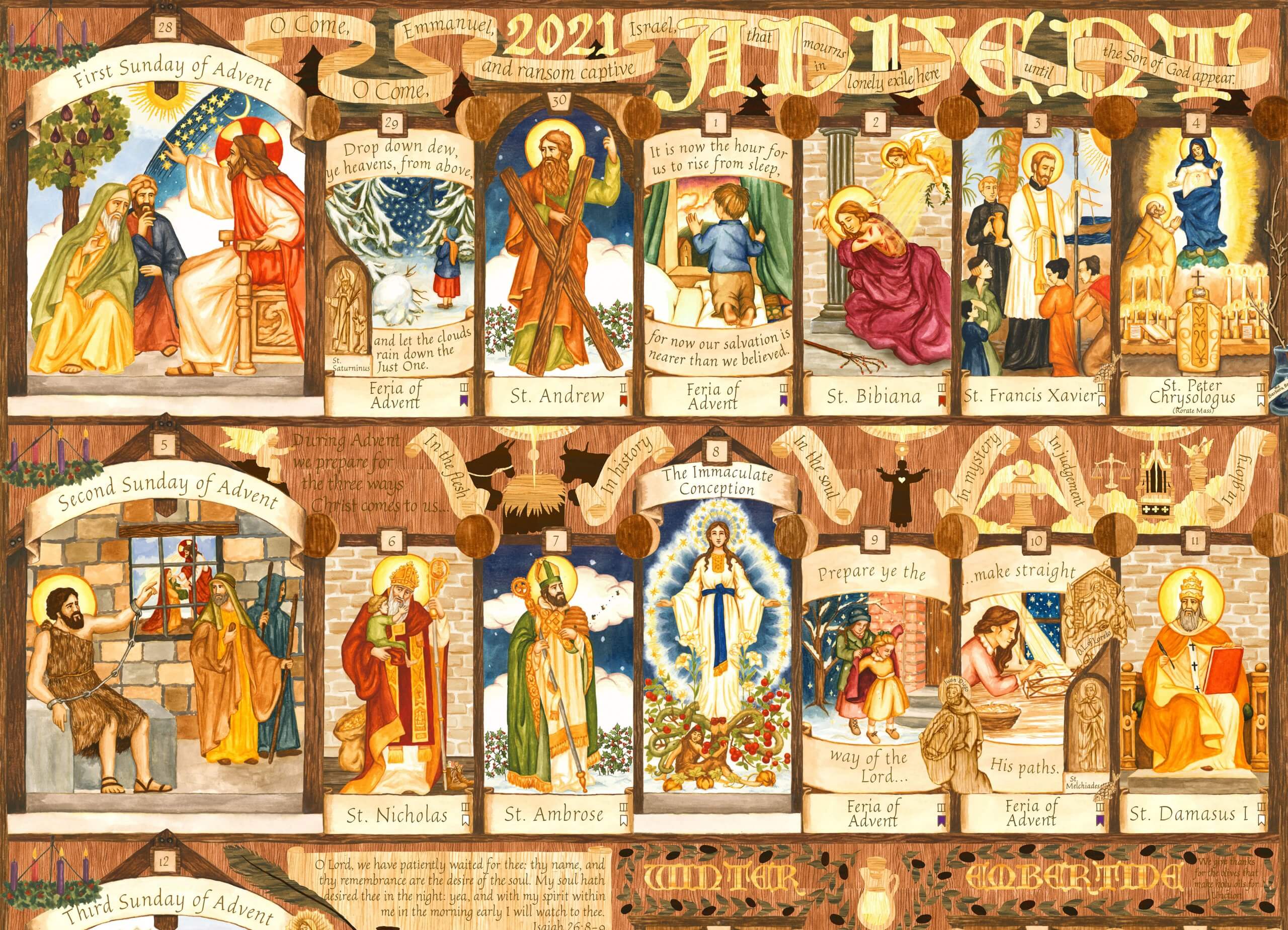It takes saints to make saints. The liturgical year of the Church is filled with quite literally a priceless array of treasures that are all oriented to make it easier for us to get to Heaven. The commemorations of the saints, the feasts and fasts, the monuments in the life of Christ and His Church are our lifeline to the joys of those who live with God. And something is taking place, like the sprouting of a tree that was cut down. The traditions of the Church are being rediscovered and taken up again by an army of young families, with babies in tow.
But, there is so much there! So much that many of us struggle to remember daily what the Church has for us to meditate on. Consider the contemplative Benedictines who spend hours in prayer each day. They get to do it all, but we the laity in our modern age of noise, ugliness, and distraction, we have a tougher time of it. We know that the contemplative life is like the perfect imitation of Mary, and it really can be said that there must be a little monk in all of us. So, we find ourselves more in Martha’s vocation, and yet needing to have enough of Mary in our souls. How do we balance this? The Sacraments, the prayer of the Church and the liturgical year furnish vital soul-food that we need on our journey to Heaven.
The societies of Europe and Catholic enclaves in America once were infused with these sentiments and practices. The whole village would turn out for the Corpus Christi procession. In the Middle Ages, even wars would halt for Christian feast days! Today, it seems in most places as though these spiritual realities are less real than fairy tales, and certainly they don’t matter more than the ‘health’ of the body. There is truly something strange with the whole world masking up and the promotion of vaccines with a religious fervor.
But, I digress. If we want to become saints, we must have them with us every day! And ideally, we should be able to participate in a lively parish religious life. This is difficult for many families who do not live close to where they attend the Traditional Liturgy. This distance makes gathering outside of Sunday difficult and necessitates families to build into their family life the celebration of the liturgical year. In response to this, many tech savvy moms have found each other on the internet and are sharing the things they do with their children to build a Catholic culture in their homes. And the fortunate few who do live close enough to each other have begun to celebrate feasts like Michaelmas and Martinmas and to take greater steps toward community. Many still quietly struggle to do what little they can, and it can be disheartening.
My wife and I are Benedictine oblates and we have a desire to make the liturgical year present in our home and especially to our children. We live in the shadow of the abbey here, and the monks truly are an inspiration to us as they walk through the never-ending liturgical pageant. But, we still really struggle to keep up with the liturgical year with four little kids running around and one on the way. My wife, Michaela, began to look for things out there that we could use in our home to help us stay better connected. We need visible signs and physical things to keep in our home to help us not forget. For the traditional year, she could find very little that was put together like she was looking for.
So, she decided to make something. That something has changed and grown into what we now call The Illustrated Liturgical Year. We are illustrating the entire traditional liturgical year of the Church so that you can hang it on your wall and see at a glance where you are in sacred time every day. The Illustrated Liturgical Year looks new and yet it is hardly original, you could say, because all the imagery in it is drawn from the great art traditions of East and West, medieval and classical. It follows what was set down by Dom Guéranger in his great work, The Liturgical Year, and takes inspiration from the Divine Office and traditional missals.
This differs greatly from other calendars as each day is illustrated with the saint, feast, or feria of the day. The borders contain imagery depicting elements from the Divine Office or the readings in the liturgy. It is all presented together framed to show the liturgical season as a unity and how the things meditated upon in that season all come together to make a narrative. And by remembering this narrative each day, we are aided in growing in our faith.
We are honored to work with Sophia Institute Press which is publishing our work and bringing this project to more families than we ever could on our own. Visit their website to order the first set, The Christmas Cycle, which covers Advent, Christmas, and Epiphany. The calendars are made for each year, like a traditional wall calendar. With this on your wall, you may never miss a saint’s feast day again!


